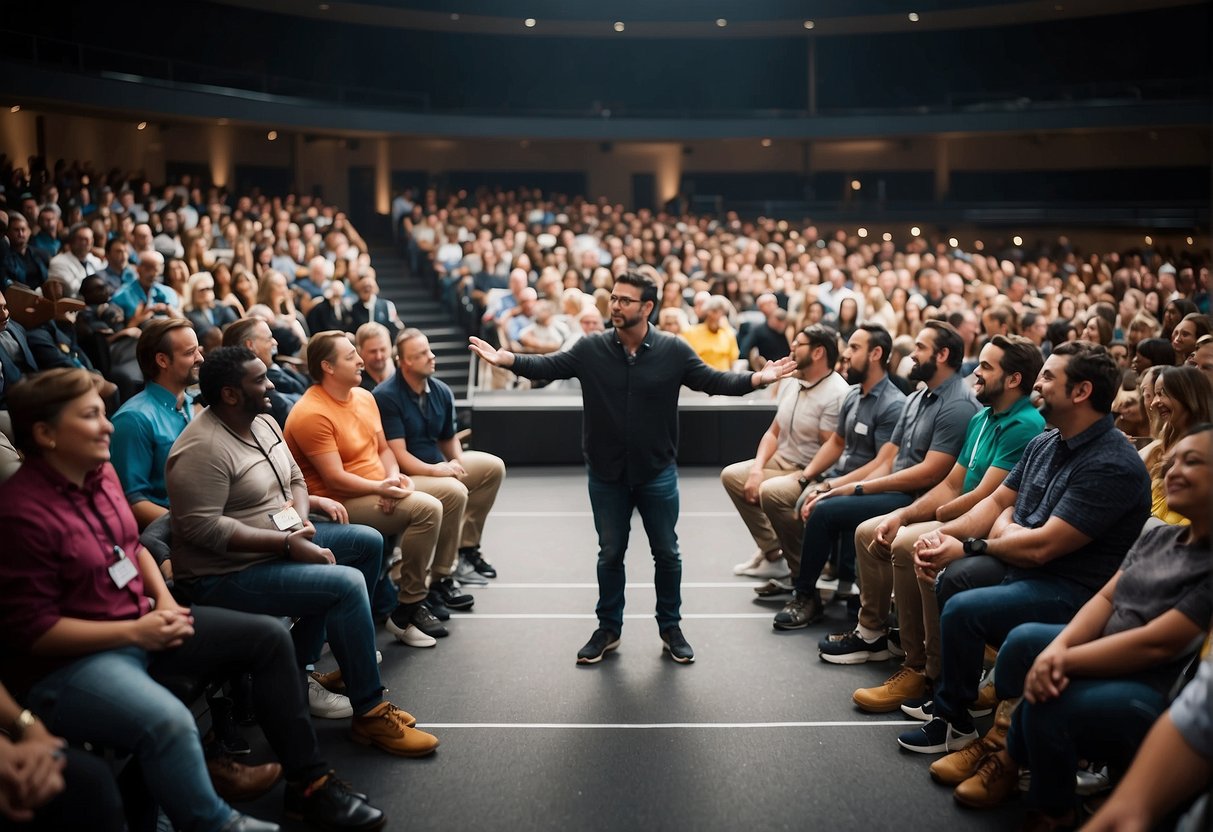Understanding the Audience

Before planning any presentation in the sports industry, we need to meticulously examine who will be receiving the message. Pinpointing the demographic and psychographic details of the audience sets the stage for an impactful engagement.
Demographic and Psychographic Analysis
To effectively address the audience, we first gather demographic information such as age, gender, ethnicity, income, marital status, race, and education level. This quantitative data collection forms the base of our demographic audience analysis. We can represent this data visually in a table for clarity:
| Demographic | Description |
|---|---|
| Age | Variety in age range dictates content relevancy. |
| Gender | Determines if the message should be tailored. |
| Income | Suggests the economic diversity present. |
| Ethnicity & Culture | Influences cultural references and examples used. |
| Education Level | Helps gauge the complexity of information presented. |
Alongside these demographic characteristics, we consider psychographic information—beliefs, interests, opinions, and lifestyles. A questionnaire or attitudinal survey can help gather this qualitative data. Understanding the audience’s frame of reference—what is their relationship to the topic? Are they industry veterans or new enthusiasts?—allows us to align our message to their psychographic profile.
Assessing Audience Expectations and Experience
Audience expectations often hinge on their prior experience with the sports industry; their level of expertise can significantly influence their needs and how they receive the speaker's message. We compile and analyze the audience's beliefs and interests to ensure these expectations are met. For instance, we look at their volunteerism within industry-related activities or if their occupation aligns with the content being discussed.
To assess the audience size and voluntariness, we may use:
- Voluntariness: Are they self-motivated to attend, or is it a job requirement?
- Size of the Audience: Smaller groups might expect more interaction, while larger ones might anticipate a broader overview.
By integrating both qualitative and quantitative techniques in our approach, we encompass the full spectrum of audience analysis, setting the foundation for a speaker's success in the sports industry.
Crafting the Speech
When we craft a speech within the sports industry, we focus on leveraging personal experiences to enhance our credibility and carefully adjusting the content to align with the audience's knowledge level.
Integrating Personal Experience and Credibility
We must acknowledge the power of personal experience when speaking on topics related to the sports industry. By sharing our authentic experiences, we provide a foundation for inductive reasoning, allowing the audience to draw inferences from the specific to the general. Our experience is a testament to our credibility. It's essential to strike a balance between conveying our background knowledge and using jargon that might be complex for the audience. We selectively incorporate anecdotal evidence and humor to make our points more relatable and memorable. However, we maintain clarity to ensure that even the most controversial topics are addressed with tact and insight.
- Personal anecdotes: Share relevant stories to illustrate points clearly.
- Humor: Use sparingly to engage the audience without detracting from the message.
- Jargon: Use only when necessary and explain terms to maintain clarity.
Tailoring Content to Audience's Knowledge Level
We meticulously tailor our speech's content to the audience's level of knowledge about the sports industry. It's vital to simplify complex ideas without oversimplifying the worthwhile topic at hand. We achieve this by varying our language and explanations based on the audience's background knowledge. Visual aids are often implemented to bridge gaps in understanding and enhance the overall presentation. When dealing with technical aspects or statistics, we provide context and comparisons that allow for easier comprehension. Our aim is to make the presentation both accessible and informative, avoiding patronization while ensuring every member of the audience finds value in our speech.
- Visual Aids: Use charts and images to simplify complex concepts.
- Audience Knowledge: Adapt explanations to match the audience's familiarity with the topic.
- Clarity: Prioritize clarity to ensure all audience members can follow along.
By adhering to these principles in crafting our speech, we present with credibility and ensure that our message is impactful and clearly understood.
Effective Delivery Techniques

In the sports industry, our ability to convey information effectively hinges on our mastery of certain delivery techniques. These techniques enhance the speaker’s influence and ensure the message resonates with the audience.
Connecting Through Communication Style
We ensure our communication style is tailored to suit the target audience, focusing on clarity and engagement. This involves incorporating credible research and ethical responsibility into our narratives. We prefer a conversational tone which facilitates direct observation and encourages audience interaction.
- Adaptability: Modify our language complexity according to the audience's level of understanding.
- Engagement: Ask questions and encourage audience participation for a dynamic exchange.
Using Visual Aids and Non-Verbal Cues
We harness the power of visual aids to support and clarify our message, thereby enhancing comprehension and retention. With judicious use of slide presentations or videos related to sports statistics or strategies, we keep our presentation visually stimulating.
- Visual Aids: Utilize charts, graphs, or images that are directly relevant to the content.
- Non-Verbal Cues: Maintain eye contact and use gestures for emphasis, ensuring our body language reflects the confidence and passion we have for the topic.
By focusing on these elements, we set the stage for a powerful presentation that is both informative and inspiring.

